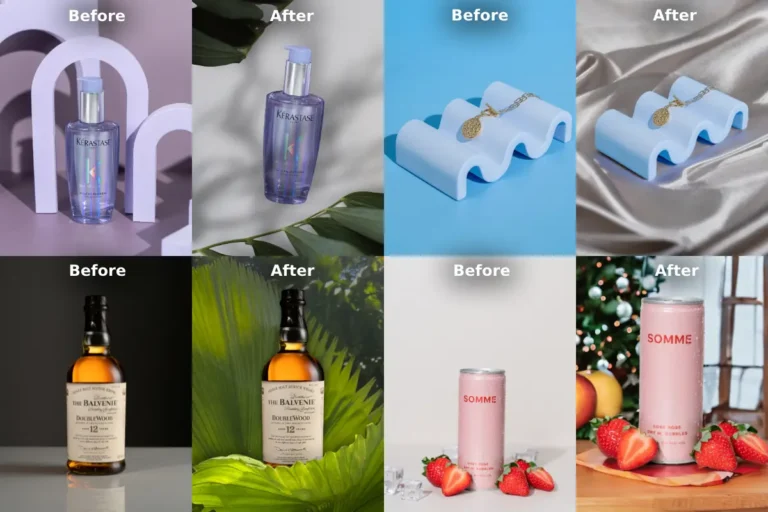For a designer, time is an invaluable resource and quality is a constant search. How can we balance the need to produce exceptional results with the challenge of meeting tight deadlines? Today we give you some tips that will help you increase your productivity and design and also ensure the quality of your work.
The famous graphic designer Paul Rand said: “There is not a single element of design that is not a problem to be solved.” In this context, designing better and more efficiently not only means optimizing our processes, but also finding effective solutions that communicate the end goal in a memorable way.
From setting clear goals to automating repetitive tasks, don’t miss this article and discover how to optimize your workflow without compromising your creative quality.
Table of Contents
8 Tips to Keep Productivity and Design Together as a Designer
These are eight tips that will help you balance the difficult relationship between time and quality. Don’t miss them and increase your productivity in your daily life as a designer.
Set clear goals and specific objectives
When beginning any design project, it is important to understand and have a clear vision of the client’s objectives and project requirements. This involves not only understanding the message the client wants to convey, but also knowing the audience and the market. Setting clear, specific goals from the beginning provides you with a solid framework that allows you to focus your energy and creativity on the solutions that really matter.
With well-defined goals, you can develop a detailed action plan that guides you throughout the entire design process, so every decision you make is aligned with the ultimate goal of the project. Additionally, having specific goals also helps you evaluate your progress and make adjustments along the way if necessary, allowing you to stay on track and focused on success.
Research before starting to design
Preliminary research is a basic step in a design project. Before diving into the creative process, take the time to research the market, analyze the competition, and explore the category related to the project. This provides you with valuable information, which will help you generate more ideas and make informed decisions throughout the design process.
Important. Research can also be understood as a continuous process to be developed throughout any project. If you adopt this vision, you will be more up-to-date and will be able to adapt your approach based on the needs of the moment.
Go back to basics: use pencil and paper to sketch out your ideas
Despite living in the digital age, the power of a simple pen and paper should not be underestimated. Before you jump straight into your favorite design software, take a moment to sketch out your ideas on paper. This approach allows you to freely explore different concepts and design solutions in a faster way.
Sketches offer a more organic representation of your ideas, which can help you better visualize the structure and flow of your design before taking it to the digital world. In addition, they are also a good tool to communicate your ideas to other team members or your clients.
Automate repetitive tasks
Identify repetitive tasks in your workflow and look for ways to automate them. Many actions in graphic design can be automated using functions and scripts available in programs such as Figma, Illustrator or InDesign.
Spend some time exploring the automation capabilities of your design tools and look for opportunities to apply them to your workflow. By freeing yourself from tedious and repetitive tasks, you will be able to focus on more creative and strategic aspects of your work, allowing you to be more productive and efficient overall.
Keyboard shortcuts, for example, despite not being an automation per se, are a good ally to save time in most design platforms.

Iteration and collaboration: keys to success
Performs repetitive cycles of design review and adaptation. Instead of trying to achieve perfection from the start, this approach gives you more flexibility and allows you to explore more ideas during the process. This way, you can also receive earlier feedback from colleagues, or even clients, which will allow you to identify which elements or aspects are working well and which need improvement.
Working in a collaborative environment allows you to incorporate diverse perspectives and experiences into the same design, which will most likely increase the quality of your final result. Ask for help when you need it and offer yours to others when possible.
Maintain an organized work environment
A tidy and organized workspace can have a big impact on your productivity. Not only physical, but also digital. Organize your files, folders and digital resources in a coherent and accessible way. This way you will find what you need when you need it, avoiding unnecessary waste of time searching for files or information.
Use productivity tools that can help you organize your work and effectively carry out your day-to-day tasks.
Additionally, having a clear desk free of distractions can help you focus better and minimize mental chaos.
Manage time efficiently
Effective time management is essential to improve your productivity. Take time at the beginning of each day to plan your tasks and set priorities. Break your projects into smaller tasks and allocate specific times to complete them. There are many methods to stay focused and productive. Find out, experiment, and choose the one that best suits your needs.

Learn to say no to distractions and tasks that don’t directly contribute to your goals. This is very important. Set clear limits on the time you spend checking emails, social media, or other non-design activities. They are distractions that do not help us stay focused and that limit our efficiency when working.
Balance your personal well-being and work hours
Taking care of your health is very important to increase your productivity and perform at work. Find a healthy balance between work and rest to avoid burnout and burnout labor. Designing requires being clear, so you can also take some breaks during your work day. Go outside for five minutes to get some fresh air, clear your mind, and get back to work.
It is also important that you identify those moments of greatest energy and concentration throughout the day, and reserve them for those tasks that require greater concentration. Instead, use the moments of lower energy and for more routine tasks or those that require less mental effort.
Stay connected to get updates on various ai generator tools and free ai tools,








